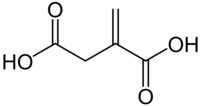
The German Institute for Quality and Efficiency in Health Care (IQWiG) assessed the added benefit of ticagrelor for patients with acute coronary syndrome already in 2011 in its very first dossier assessment, just after the Act on the Reform of the Market for Medicinal Products (AMNOG) had come into force. It was shown then that the drug provided considerable added benefit to patients with mild myocardial infarction without the typical changes in the ECG or with unstable angina pectoris. There was no corresponding proof for severe myocardial infarction.
The approval has now been expanded: Ticagrelor is approved for co-administration with low-dose acetylsalicylic acid (ASA) for prevention of atherothrombotic events after an initial one-year treatment also in specific patients whose myocardial infarction occurred at least one year ago. IQWiG investigated whether the drug has advantages in comparison with the appropriate comparator therapy also for this therapeutic indication. According to the findings, there is an indication of an added benefit with the extent "minor".
Myocardial infarction must have occurred one to three years ago
The expansion of approval applies to adults with a high risk of developing another atherothrombotic event whose myocardial infarction occurred one to three years ago. Risk factors are the following: age of at least 65 years, diabetes mellitus requiring medication, more than one previous myocardial infarction, multivessel coronary heart disease, or chronic renal impairment.
Ticagrelor at a dose of 60 mg is co-administered with ASA for prevention, whereas dosage of the initial treatment (myocardial infarction less than one year ago) is 90 mg. The Federal Joint Committee (G-BA) specified ASA monotherapy under continued basic therapy of the myocardial infarction and measures to achieve an adequate lifestyle as appropriate comparator therapy.
Benefit assessment on the basis of the PEGASUS study
The assessment was conducted based on the three-arm randomized study PEGASUS-TIMI 54. All patients received unblinded ASA as basic therapy and, blinded, ticagrelor in dosages of 60 mg or 90 mg or placebo. Data from the 60 mg arm and the placebo arm were compared for the benefit assessment. About three quarters of these patients complied with the approval, thus constituting the subpopulation relevant for the assessment.
Advantages in mortality and morbidity, but also disadvantages
An indication of an added benefit of the combination in comparison with ASA monotherapy was shown in all-cause mortality. There were also indications of an added benefit in the morbidity outcomes "cardiovascular mortality, nonfatal myocardial infarction and nonfatal stroke" as well as "myocardial infarction".
Data on health-related quality of life were not recorded in the study. In the outcome category of side effects, there was an indication of greater harm from ticagrelor regarding both discontinuation due to adverse events (including bleeding) and severe bleeding, and proof of greater harm from ticagrelor regarding dyspnoea.
These disadvantages did not completely outweigh the advantages, particularly in all-cause mortality. In summary, there is an indication of a minor added benefit of ticagrelor in combination with ASA in comparison with ASA monotherapy for the prevention of atherothrombotic events in patients at risk and a history of myocardial infarction.






 Itaconic acid
Itaconic acid 
 Midazolam
Midazolam  nadolol
nadolol 